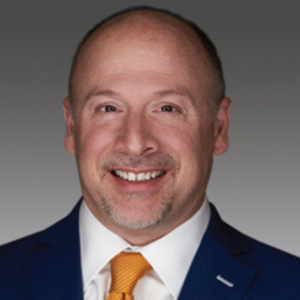The Basics of Staff Education
| It involves much more than mandatory in-services, and pays off in many ways |
| No matter where it is located or the level of acuity it treats, a long-term care facility often echoes with the words “in-service meeting” or, better yet, “mandatory in-service.” Just walk past the employee entrance or the time clock and you will see these words in print, as well. Regulation directs facilities to educate their staffs, requiring them to present specific topics at defined time intervals and to include various groups of employees. These education and training duties are, in many facilities, delegated through the nursing staff. Frequently these hardworking professionals see only the tasks and the requirements involved. They miss the vital point that the task of educating staff is so much broader than the typical assignment to “get the in-services done” and “make sure everyone signs in to get his credit.” In fact, the knowledge base of a facility’s staff and management is the foundation of that facility’s quality of care, as well as of its regulatory compliance. Including staff education and competency evaluation in the facility’s strategic plan gives management the opportunity to design the knowledge base of the employees and direct everything that flows from it. The good news is that this approach is not expensive, and yet the impact on resident care and employee retention will be obvious. When considering expense, think of all the meaningless or counterproductive programs that we have scheduled and demanded that our staffs endure without any measurement of the results. For example, the “mandatory end-of-shift program in a warm room or you won’t get your paycheck” scenario comes to mind. Each minute we waste in any facility process is expensive, but the habit that staff acquires of attending the program and not learning or being held accountable for learning is even more expensive. Facilities must realize, of course, that development of effective staff education is an investment. Each time you gather a group of employees to learn, you are investing significant resources; just figure the hourly rate for the employees for that time period, plus the time and effort required to prepare and present the material for the session. But the expense begins to make sense when you ask yourself, does the training room promote learning? Are staff present just to be compliant, or are we stimulating thought and changing behavior? Starting Off on the Right Foot The foundation of the staff development program begins with an investment in orientation. Many orientation programs do not begin the educational process properly. Design of an orientation program must begin with the question, what is the knowledge base our employees need to work in our facility? The orientation program must focus on practical information, facility policies and procedures, employee attitudes and competency evaluation (which will be discussed later). The facility’s mission must permeate the program. Some further thoughts on orientation: Ingredients of a successful orientation include regulatory “survival training,” communication skills, core clinical requirements, easy-to-read reminders (“cheat sheets”) and mentoring of new employees by selected staff members. Competency testing should be included, as well. Most orientation programs don’t allow sufficient time for the new staff person to ask questions. Finally, the expectation that learning will be an ongoing part of the job must permeate the orientation process. Developing the Programs Training programs for caregivers, as required by federal and state regulations, must fit into the facility’s overall strategy. The nurses teaching these programs must understand the necessary conversion from clinician to trainer they must make-a very difficult task for some clinical professionals. Many learners, meanwhile, have their own barriers to contend with because of their educational backgrounds and life circumstances. To expedite the process for everyone, facilities need clinically accurate, well-organized, easy-to-implement materials that are presented clearly and pleasantly. (A recently published textbook/resource for nurse aide training classes from Hartman Publishing, Reach for the Stars! The Complete Guide to Successful Nursing Assistant Care by Diana Dugan, RN, is an excellent example; see Product Spotlight, p. 12.) Classes must be structured with the learner in mind. That means, for example, using short periods of lecture presentation and skills demonstrations, with open discussion and problem solving as a focus. As for topics, it is very important that the caregiver training program include current regulatory information so the trainee can understand the reasons for procedures and policies. (Remember, new caregivers could meet a surveyor the first day after the class; they need to know what to do and how to respond to surveyors’ questions.) Also, since the Minimum Data Set (MDS) is used in all nursing homes, caregivers should know not only that it exists, but that the MDS information they gather about the residents and their resulting care delivery will be recorded in the facility’s database for reimbursement and quality assessment. Clinical material presented should not only focus on resident care, but provide the trainee with the basic concepts of infection control, resident and staff safety, communication, resident rights, restorative care, and resident care observation and reporting. Competency levels can be created and measured with direct, brief competency-testing tools. Learners will be more responsive and responsible if they know their competency is an issue or will be evaluated. Post-tests are effective in assessing competency for most groups if they are brief, related directly to the class content and required for all participants. During this portion of the training the instructor might make observations that would show the need for focused training during the nurse aide training program or follow-up training after competency testing has been completed. If a trainee is not properly executing the skills or communicating during care delivery, the instructor must focus on these issues prior to competency testing. Clinical observations by the instructor might also highlight general training needs for all staff-for example, the frequency of or focus on hand washing or proper application of gait belts might require referral to staff development to schedule follow-up training for all staff. Novices and Experts Alike An interesting question arises these days as to who should be trained. That’s because early in the development of the regulatory process governing caregiver education, many states grandfathered certain caregivers without requiring them to complete the training program. These employees still need basic information to update and enhance their skills. To address this, current caregivers might be required to attend parts of the training class for new caregivers, or perhaps additional sessions could be scheduled for a retraining process. The program should give these experienced caregivers the opportunity to show their competency through quizzes, worksheets or skills competency tests. (The Briggs Company’s “Policy and Procedure Manual” includes many competency tests for caregivers and nurses.) They will appreciate this affirmation of their skills. Presentations for newer and older employees alike can be framed by asking some very simple questions: ‘What do we want our staff to know? Some further pointers: Various groups of employees, both clinical and operational, must meet common knowledge base expectations. For example, all employees must know fire safety protocols and be confident of their roles should an emergency occur. Clinical personnel at various levels all need to be knowledgeable regarding facility policies and procedures. Nurses on the unit need to know the documentation process and the terminology used for various clinical and behavioral observations. Scheduling As for scheduling, large facilities can schedule 20- to 30-minute sequenced sessions in 8- to 10-week rotations for clinical staff to review or update their documentation and assessment skills. The 30-minute model works well with a program repeated two times in a day or two days in sequence at different times. Required training can be offered before the shift begins when the learner is rested and more likely to remember the material. All required staff education should be reinforced with written material or tools to help staff remember the key points. Using External Resources Facilities frequently use outside resources for training and education. Outside programs should be investigated for content and the qualifications of their presenters. The time spent doing this is usually worth it to ensure that the investment of time and resources is appropriate; too often a glossy brochure with a catchy program title will prompt a facility to register an employee for a learning experience, only to have that person return with inaccurate or nonapplicable information, or no information at all. One of the advantages of using an outside program is being able to use the resources from that program, such as handouts and networking contacts, to enhance the staff’s knowledge and to inspire new programs. But too frequently the materials, contacts and ideas from such programs “stay in one brain” and are not shared. An outside education provider offering quality programs and convenient locations for training can be the trainer of choice. However, conventions and topic-focused seminars can be a useful part of the learning process for professionals. Be sure, though, that the participants bring their materials back to share with colleagues, and that the contacts they’ve learned of for networking or acquiring vendor information are shared, as well. In essence, the “gift of information” reaffirms your commitment to the development of your staff as individuals and as a team. It will pay for itself many times over in staff recruitment, stability and high-quality performance. NH Leah Klusch is executive director of The Alliance Training Center, Alliance, Ohio. She is a nurse educator, consultant and author with more than 30 years’ experience in the post-acute care field. For further information, phone (800) 890-5526 or visit www.tatci.com. |
I Advance Senior Care is the industry-leading source for practical, in-depth, business-building, and resident care information for owners, executives, administrators, and directors of nursing at assisted living communities, skilled nursing facilities, post-acute facilities, and continuing care retirement communities. The I Advance Senior Care editorial team and industry experts provide market analysis, strategic direction, policy commentary, clinical best-practices, business management, and technology breakthroughs.
I Advance Senior Care is part of the Institute for the Advancement of Senior Care and published by Plain-English Health Care.
Related Articles
Topics: Articles , Facility management , Staffing











